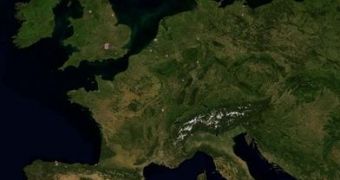Microsoft's Virtual Earth has yet to come close to the user base of Google Maps, but this does not mean that the company is not evolving its platform, in an effort to top its direct competitor from Mountain View. Case in point: in January alone, the Redmond company introduced a 27TB update to Virtual Earth. According to Chris Pendleton, Virtual Earth Technical Evangelist, the massive 27+ Terrabytes update contained mainly aerial and satellite imagery. But also 3D data for the following USA cities: Redding, CA; Colorado Springs, CO; Fort Collins, CO; Des Moines, IA; Sioux City, IA; Waterloo, IA; Boise City, ID; Decatur, IL; Ann Arbor, MI; Dearborn, MI; Flint, MI; Kalamazoo, MI; Lansing, MI; Lincoln, NE; Omaha, NE; Reno, NV; Ogden, UT; Bellingham, WA ,and Kenosha-Racine, WI.
Also, Pendleton has warned Virtual Earth Platform customers that Virtual Earth Version 2 is being deprecated. At this point in time, Microsoft plans to completely retire version 2.0 of the Virtual Earth Map Control as of March 31, 2008. Customers are advised to migrate to version 6.0 by the end of March. "It's been far too long with way too many versions out there, but I wanted to alert everyone about the deprecation of the Version 2 Virtual Earth API being deprecated on March 31, 2008. So, if you're on V2 you better get cracking on updating to a new version, like, oh, I don't know Version 6," Pendleton stated.
And on top of it all, Microsoft has also signed two very prominent clients to the Virtual Earth platform. First off, Yellow Book now uses Microsoft Virtual Earth for mapping. And on the same day, the Redmond company announced that real estate company Windermere had jumped aboard the Virtual Earth wagon, switching over from Google Maps. "Windermere was using Google Maps and is still using ESRI maps in some spots, but they've launched their 3rd beta for their new "Property Point" site with Virtual Earth and this application is smokin'," Pendleton added.

 14 DAY TRIAL //
14 DAY TRIAL //